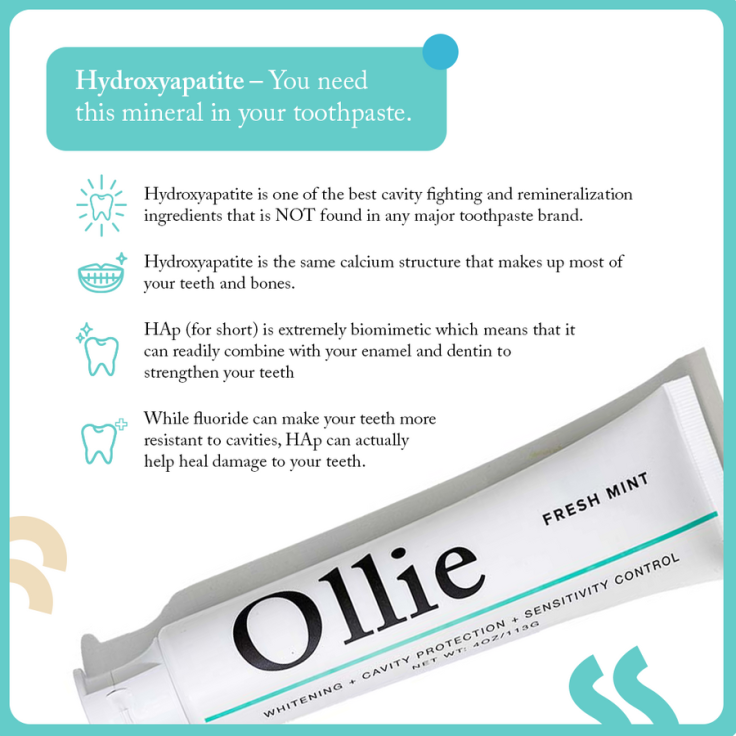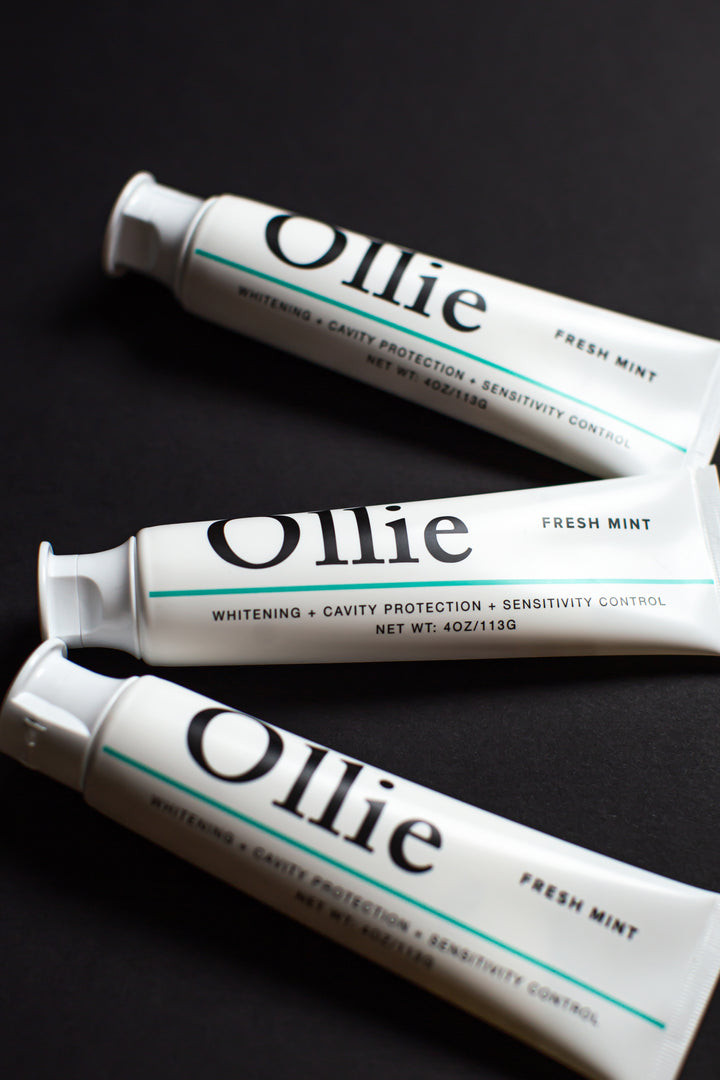The Key Ingredient That's NOT In Your Toothpaste
After being developed by NASA in the 1970s to aid in mineral loss while astronauts were in zero-gravity environments, hydroxyapatite was adopted by toothpaste companies in Japan and has been a staple ingredient for the past 30 years. Meanwhile, no major American brand has changed its formulation to include this amazing mineral.
In the pursuit of that radiant grin, oral care has taken leaps and bounds in innovation. Among the plethora of options, one product has been making waves for its exceptional benefits – hydroxyapatite toothpaste. Hap, for short, is the same material as your tooth enamel and has the power to remineralize your teeth in ways that no other ingredient can. This toothpaste ingredient may soon dethrone fluoride as the main cavity-fighting tool for at-home care.

Understanding the Science Behind Teeth Whitening Toothpaste
Teeth whitening toothpaste is the most popular choice for individuals seeking a brighter smile without the need for professional treatments. The science behind these toothpastes revolves around their formulation and key ingredients. Most whitening toothpastes contain abrasive agents like silica that help remove surface stains through gentle abrasion. Additionally, they often include peroxide compounds or enzymes like papain to break down deeper stains and lighten tooth color.
To truly grasp the significance of hydroxyapatite toothpaste, it's important to delve into its scientific foundation. Hydroxyapatite is a naturally occurring mineral that forms a significant portion of our tooth enamel. This mineral plays a crucial role in maintaining the strength and integrity of our teeth. Since the mineral is the same substance as our teeth, it is extremely bioactive, meaning that it can readily combine with your tooth structure. Hydroxyapatite works in a different way than any other ingredient to whiten teeth. The minerals can combine with the surface of your enamel, making your teeth smoother, less porous and whiter.
Unlike traditional whitening toothpaste paired with a sonic toothbrush or a regular one to only remove surface stains, hydroxyapatite toothpaste works by remineralizing teeth. It not only strengthens the enamel but also helps repair micro-cracks and imperfections on the tooth surface. This innovative approach not only promotes better oral health but also contributes to a visibly brighter smile.
The Threefold Benefits
- Whitening Power: The whitening power of toothpastes usually lies in their ability to gently remove surface stains. Hydroxyapatite Toothpaste's remarkable ability to remineralize teeth goes hand in hand with its whitening prowess. The hydroxyapatite particles in the toothpaste can combine with the surface of your teeth. This makes your teeth smoother, less porous and, best of all, appear whiter and healthier.
- Sensitivity Solution: Many individuals suffer from tooth sensitivity, which can deter them from using traditional whitening products. Ollie Hydroxyapatite Toothpaste, however, can be a savior for those with sensitive teeth. By repairing microscopic cracks in the enamel, this toothpaste can help reduce sensitivity over time, allowing users to comfortably enjoy hot or cold foods and drinks. Ollie also contains potassium nitrate, which is a desensitizing agent
- Enamel Fortification: The enamel is the first line of defense for our teeth against decay and damage. Hydroxyapatite-based formulas aid in strengthening the enamel, making it more resilient to the acids produced by harmful bacteria in the mouth. This fortification not only contributes to a brighter smile but also to long-term oral health.

Hydroxyapatite vs. Fluoride

Fluoride has been a staple ingredient in toothpaste for the past 50 years. Recently, there has been more debate around its safety and effectiveness. Most of the objections stem from large-scale ingestion of fluoride (like it being added to municipal water supplies). Fluoride's effect on human health has been one of the most studied topics in the last 20 years. There may be some evidence that suggests some undesirable effects if ingested in high quantities at a young age (like getting spots on your teeth), but there is nearly no evidence of undesirable effects when used in toothpaste and not ingested.
On the other hand, hydroxyapatite has no known side effects and is non-toxic.
So how does hydroxyapatite stack up against fluoride?
Several studies have been done on this topic, and most suggest that hydroxyapatite and fluoride are similarly effective in treating cavities. The key is that they work in different ways to protect your enamel. Fluoride helps form a protective barrier on top of your enamel called fluorapatite, which is very similar in structure to your tooth. Hydroxyapatite can combine with the actual structure of your teeth; this allows for a different type of strengthening where cracks and porosity are healed from inside the tooth. Why not use both? While few studies exist — there is potential to get benefits from both types of remineralization by using fluoride and hydroxyapatite. There is one brand of toothpaste that has both ingredients.
Why Isn't Hydroxyapatite In All Toothpaste?

Major manufacturers like Crest and Colgate, which together have about 70% market share, make and distribute millions of tubes of toothpaste a year across scores of formulas and flavors. They have very little incentive to change what they are doing because, for them, it's massively expensive and risky. After Tricolsan was banned by the FDA for use in soap, it took Colgate three years to remove it from their toothpaste.
The short answer is that large companies work on a large scale and do everything they can to protect their position. Exploring new and beneficial ingredients and choosing to remove old ingredients when better alternatives exist will never be their top priorities. Luckily, there are more and more small brands coming to market, giving consumers more choice when it comes to what they are putting in their mouth.



























